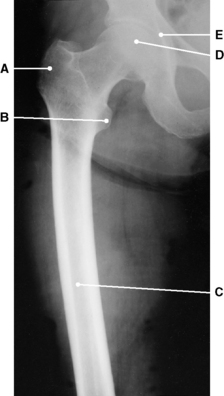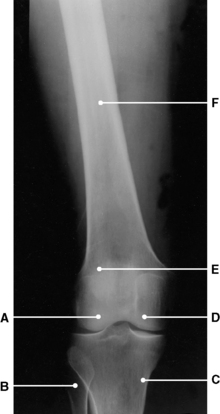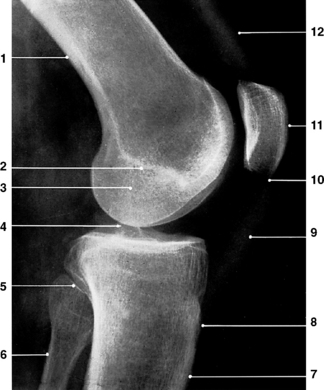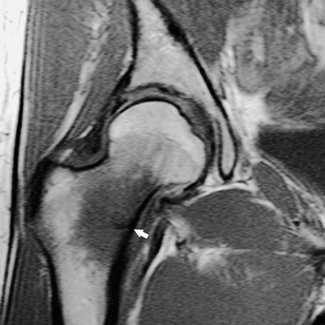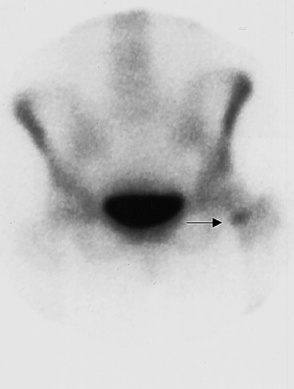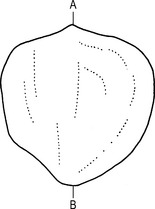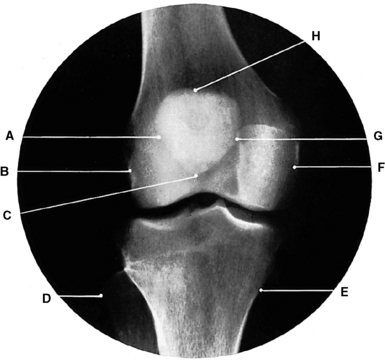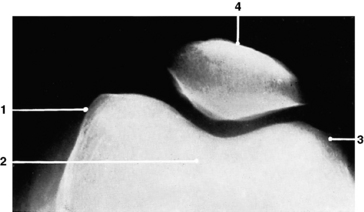6 Lower limb
Femur (Figs 6.1 and 6.2)
Type
Main parts
Features of the upper end of the femur
Intertrochanteric line –
anterior line, between the trochanters; marks part of the junction between the neck and shaft.
Intertrochanteric crest –
posterior crest, between the trochanters; marks part of the junction between the neck and the shaft.
Features of the lower end of the femur
Medial and lateral condyles –
fused together anteriorly, separated by the intercondylar notch posteriorly.
Medial epicondyle –
most prominent point of the medial condyle; provides attachment for the tibial collateral ligament.
Adductor tubercle –
above the medial epicondyle; provides attachment for the adductor magnus muscle.
Radiographic appearances of the femur
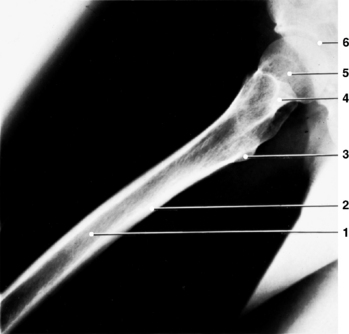
Fig. 6.4 Femur: upper two-thirds; lateral projection.
4 – Femoral neck and greater trochanter superimposed
(From Bryan 1996.)
Patella (Figs 6.9 and 6.10)
Tibia (Figs 6.13 and 6.14)
Type

Fig. 6.13 Left tibia (anterior aspect).
C–Tubercles of the intercondylar eminence
Left fibula (anterior aspect).
Articulations
Tibial condyles with the femoral condyles to form the knee joint.
Lower end of tibia with the talus to form part of the ankle joint.
Fibular notch of the tibia with the lower end of fibula to form the inferior tibiofibular joint.
Main parts
Features of the upper end of tibia
Tubercles of the intercondylar eminence –
on the superior aspect of the tibia between the articular surfaces.
Features of the shaft of tibia
Soleal line –
‘horseshoe-shaped’ oblique line; posterior aspect of the shaft which receives the soleus muscle.
Features of the lower end of the tibia
Inferior articular surface –
concavo-convex for articulation with the superior surface of the talus.


